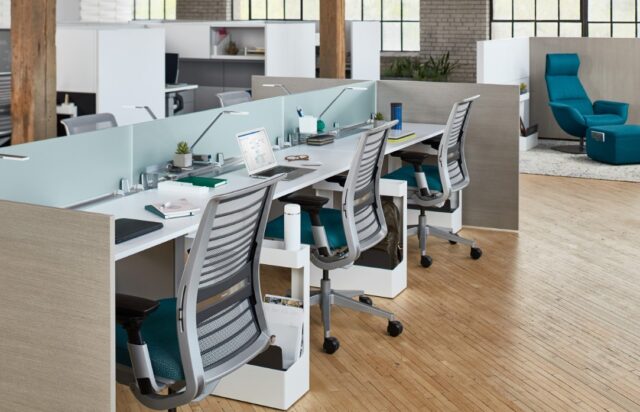
Why do we feel uncomfortable sitting in an office, and what can be done to improve the situation?
During work, people are used to sitting rather than standing, and this happens for obvious reasons. Although lying down is still more comfortable, it is hardly more practical.
Problems arise when we sit too long in the workplace for several hours, day after day, month after month, year after year. Today we will tell you what the right office chair should be.
How to choose the right chair?

The basic rule of ergonomics is that there is no such thing as “the average person”, but at the same time providing an individual chair for each employee is impractical. The only right solution may be to provide an employee with an office chair with the maximum possible adjustments. At the same time, such chairs are able to fit almost all employees engaged in the office.
The office chair should have controls that make it easy to adjust the height and tilt of the seat, as well as adjustments for the height and tilt of the back. It is important that the employee can make these adjustments while sitting. The design of the chair should be suitable for all tasks. It is also very important that the office chair wheels are properly selected. Otherwise, they can damage the flooring and may not last long.
The trial period is also important for the office chair selection process. Employees should be able to try out the chair at work and make sure it meets their needs.
“Ergonomic” chairs are available to a fairly wide range of people today. But it is impossible to make an office chair individually for a person. Nor are they designed for any particular task or for any particular workplace.
Buying an office chair just because it is called “ergonomic” is reckless, to say the least.
A chair becomes ergonomic only when it is tailored to the characteristics of the worker or group of workers, taking into account their physiological differences.
How can sitting work affect my health?

When a person can afford to change their body position while sitting at a desk, their movements are not constrained by the ample space and the ergonomics of the office chair and desk, and the risk of injury is minimal. It is quite another matter when the employee has no choice and has to sit in the same position for a long time.
The situation changes dramatically. Even considering that sitting does not require muscular effort, it still causes fatigue. Sitting requires the worker to constantly strain the muscles of the trunk, neck, and shoulders. The fixed body position narrows the blood vessels in the muscles and reduces blood flow to the working muscles. Lack of blood supply accelerates fatigue and the chance of injury is very high.
Prolonged sitting and minimal physical activity bring the body’s functionality to its lowest level. The most common ailments in such workers are circulatory and movement disorders.







